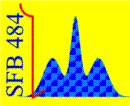
Third International Workshop 2008
Ordering Phenomena in Transition Metal Oxides
October 5 - 8, 2008, Augsburg, Germany
|
Welcome Conference Venue Accommodation Group Photo Invited Speakers (with Abstracts) Program Poster Session Technical Information Organization Travel Information Weather SFB 484 Institute of Physics |
|
Invited Talk
|
|
| Alberto Morpurgo (Delft) | |
|
Charge transport at organic/dielectric and organic/organic interfaces
|
|
|
Over the past few years, the use of organic single crystal for the fabrication of field-effect transistors has enabled the realization of very reproducible devices, in which the electronic transport properties are not limited by disorder. In this talk I will first discuss our systematic investigations of transport at organic/dielectric interfaces and show how the key role of electron-phonon and electron-electron interactions is directly visible in the experiments. In particular, I will first discuss transport measurements on rubrene single-crystal transistors with different gate insulators in the low carrier density regime. We find a very strong influence of the insulator on the carrier mobility, which decreases rapidly with increasing the polarizability of the gate dielectric. Temperature dependent measurements in conjunction with a quantitative theoretical analysis demonstrate that the phenomenon originates from the formation of Frohlich polarons, with the mobile charge residing in the organic semiconductor and the polarization cloud in the gate insulator. I will also discuss our observations at higher carrier density -0.1 carrier/molecule- where the interaction between carriers causes the current to saturate with increasing their density. An extension of our quantitative analysis of the experiments in terms of Frohlich polarons to include Coulomb interaction again reproduces the data very satisfactorily. In the last part of the talk I will discuss new results on transport at the interface between a TTF and a TCNQ crystal, which are both large gap semiconductors (i.e., essentially insulators). At these interfaces, a large charge transfer occurs from one material to the other, leading to the formation of a highly conducting 2D electronic system. By studying the temperature dependence of the conductivity we observe a metallic behavior for the highest quality samples, for which the conductance-per-square is well above the conductance quantum. The temperature dependence in devices with lower conductance gradually crosses over into an insulating behavior, consistent with the presence of larger disorder that localizes the electronic states. These TTF-TCNQ organic charge transfer interfaces represent a first example of a new class of fully molecular 2D electronic systems. |
|
|
previous / next - Invited Speakers - Program |
|
| [ 21-Apr-17 ] | [ http://www.physik.uni-augsburg.de/sfb484/Augsburg2008/abstracts/morpurgo.shtml ] |